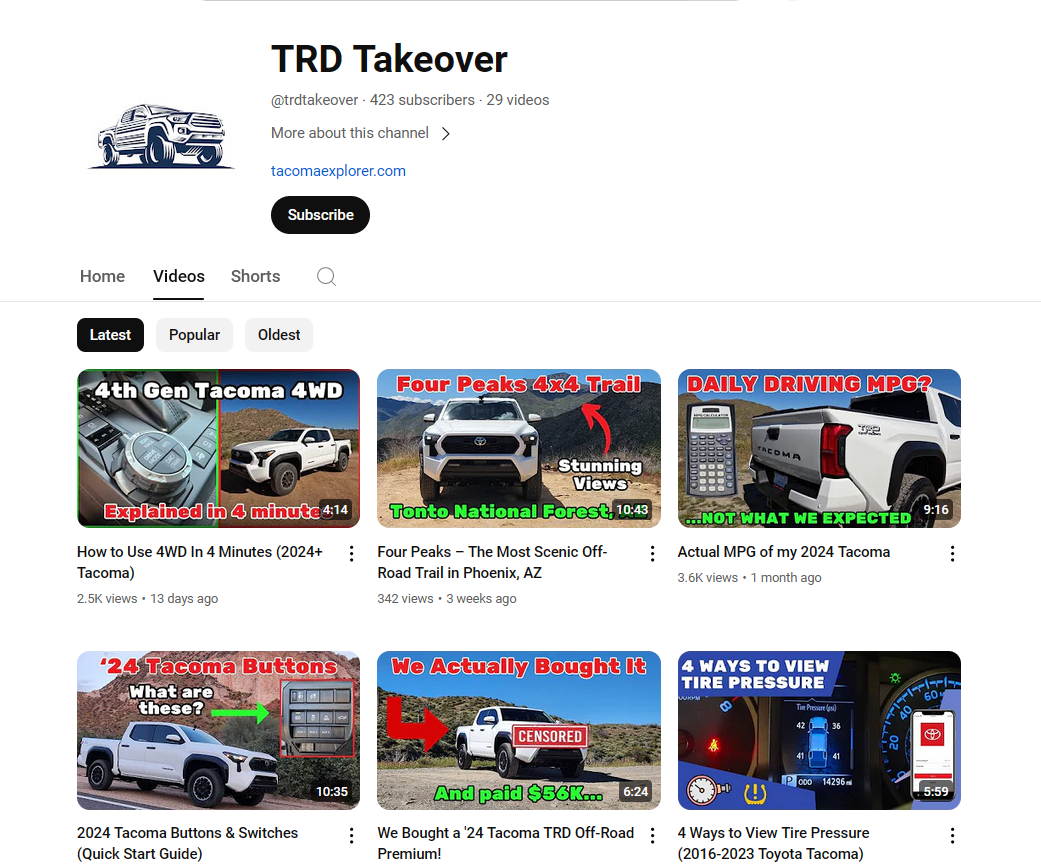Toyota Tacoma’s Adaptive Cruise Control: Explained
Adaptive Cruise Control maintains a set speed, but also adjusts speed automatically based on the car in front of you with no pedal input from the driver.
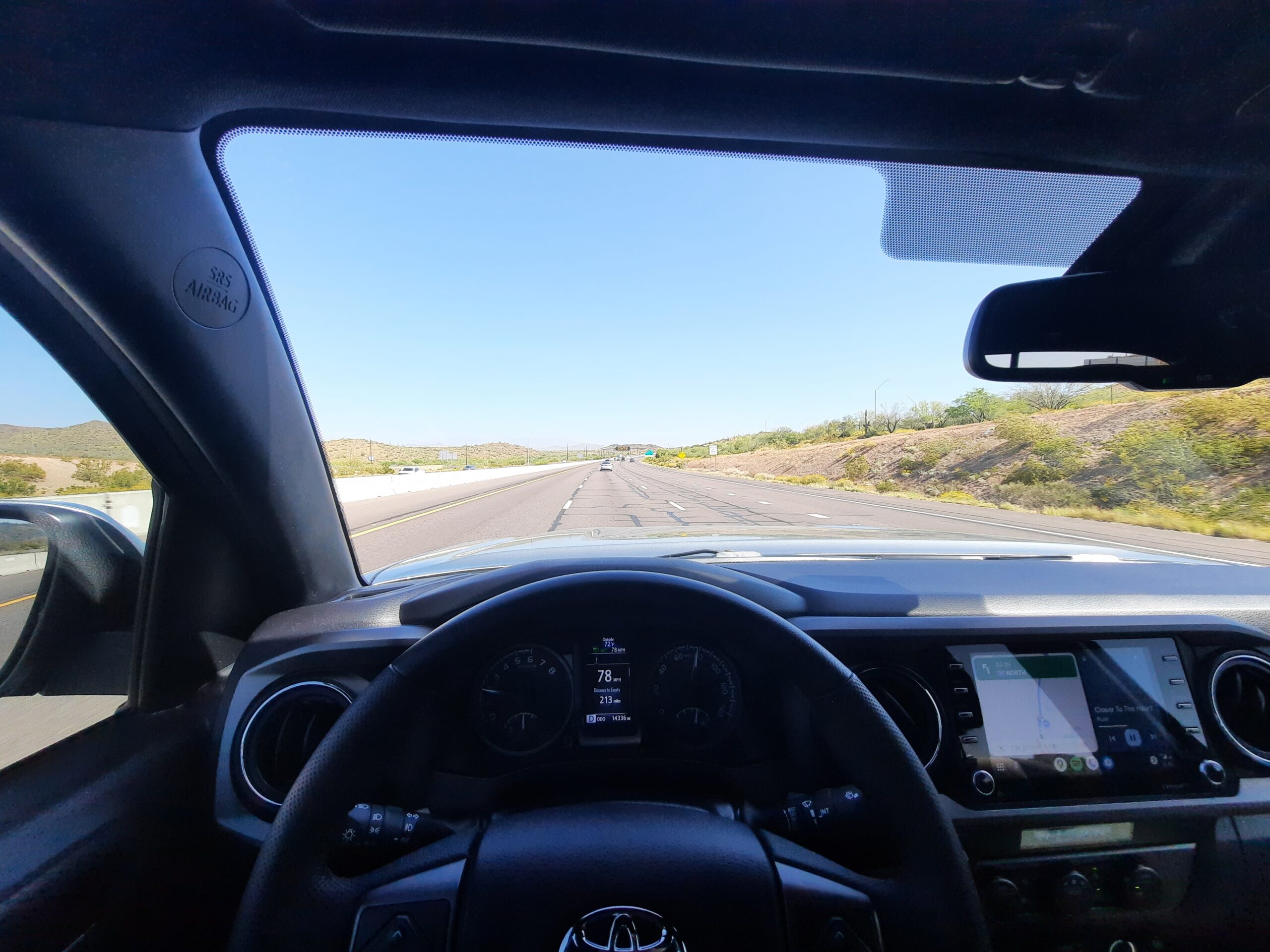
Key Points:
- Adaptive Cruise Control maintains a preset speed and distance from vehicles in front of you.
- No accelerator or brake input is needed from the driver.
- ACC can be controlled with a stalk on the right side of the steering wheel.
- ACC uses a camera, radar, and computer system to operate.
Adaptive cruise control is one of the newer technologies included with advanced automotive safety systems.
While we all know what cruise control is, it can be challenging to understand the distinction between the more recent variant. It’s helpful to understand how to use the Toyota Tacoma’s adaptive cruise control.
That’s why I’ve put together this simple guide showing you how to use your Tacoma’s adaptive cruise control feature and describe some of the benefits. If you have a deep desire to learn how the system works, I’ve included that too.
Overview of Adaptive Cruise Control
According to Toyota, adaptive cruise control helps you maintain a preset distance from vehicles in front of you. It works when traveling at speeds of 28 mph or more. It’s part of the Toyota Safety Sense system and utilizes vehicle-to-vehicle distance control.
To fully understand the system, I did some in-depth research myself. Recently, on a drive near Sedona, Arizona, I tested the Tacoma adaptive cruise control system for several hours. This experience prepared me to answer the rest of your questions.
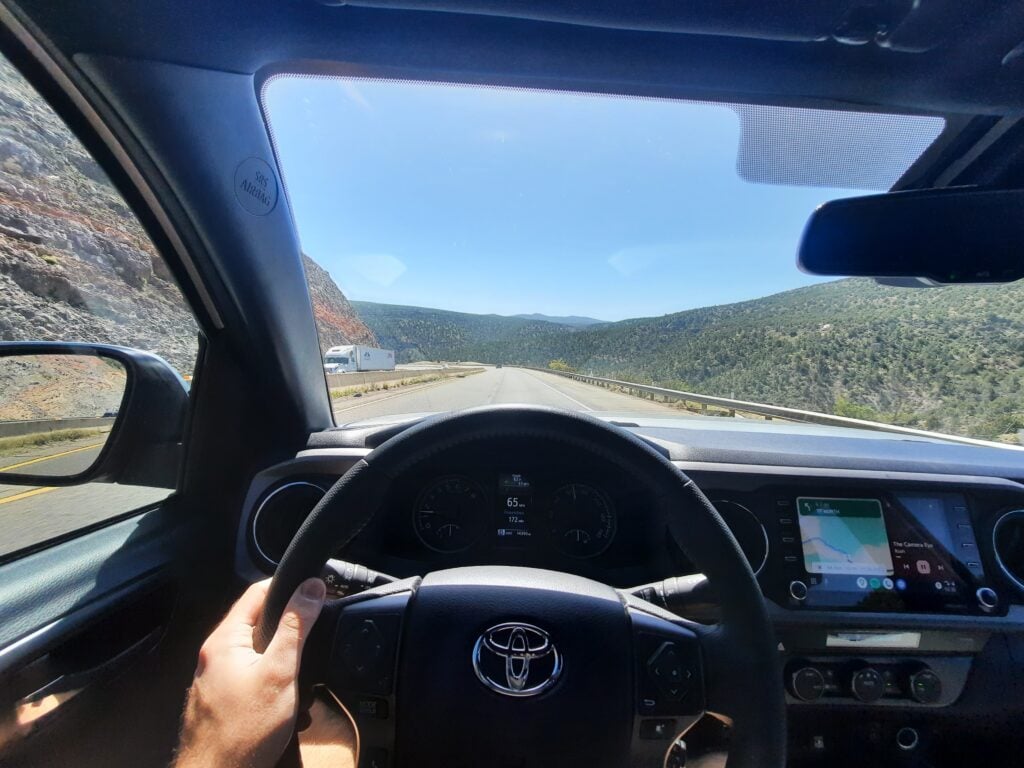
How to Use It
Adaptive cruise control is an advanced version of traditional cruise control. You can use it on highways and freeways to maintain a preset distance between your Tacoma and other vehicles.
Remember to set an appropriate speed based on the local limit, traffic flow, weather conditions, and road conditions. Additionally, your Tacoma must be in the proper gear to work (“D” or in a gear 4+ when “S” is selected). Plus, the vehicle speed must be at or over 28 mph.
The cruise control stalk moves in several different ways, as seen in the photo below. It can be pulled toward the driver, push up or down, and pushed inwards using a button.
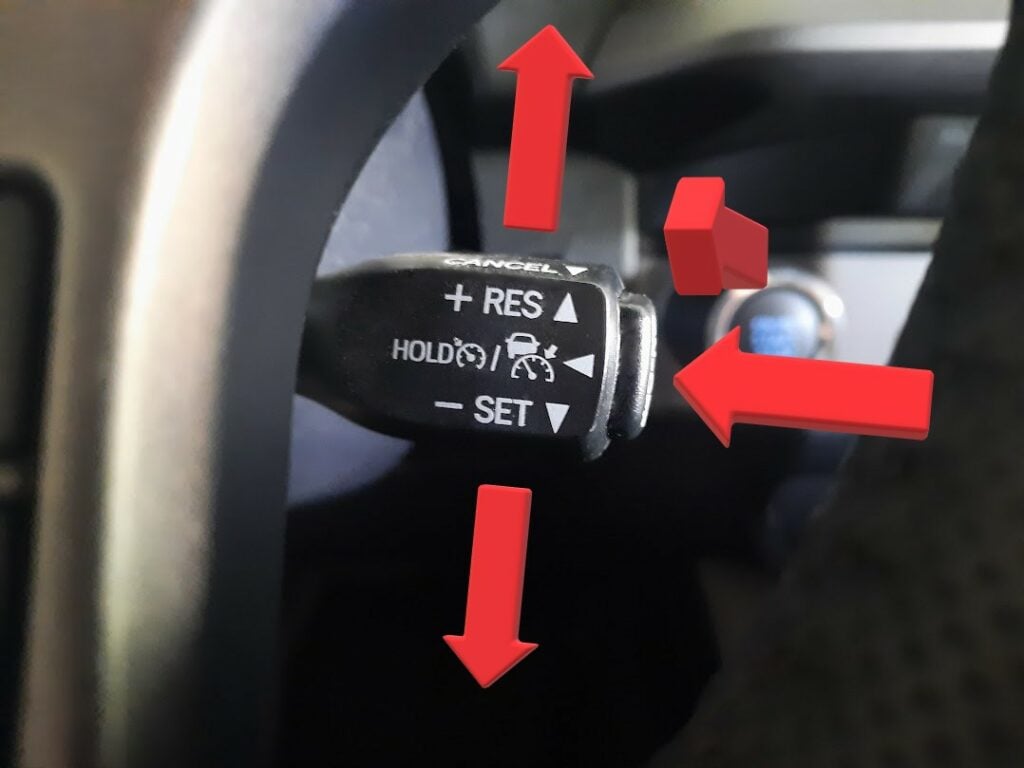
- To turn on the system, press the “on-off” button at the end of the stalk on your steering wheel’s lower right-hand side.
- On the MID, the “Radar-ready” indicator illuminates.
- To set the speed limit, accelerate or decelerate and push the lever down when you reach the set speed.
- On the MID, the cruise control “SET” indicator displays.
- If you need to adjust the speed, push the lever up to accelerate or down to reduce speed. Every time the lever is moved, the speed increases or decreases by one mph. To make large adjustments, hold it up or down.
When you are ready to turn off the adaptive cruise control, you have several options.
- Tap the brakes.
- Pull the lever towards you.
- Press the “on-off” button.
- Press the “on-off” button for 1.5 seconds or longer (this option only cancels the ability to change speed automatically according to vehicles ahead of you, but cruise control will remain on)
With the adaptive cruise control on, this picture shows on the multi-information display when there’s a vehicle in front of you.
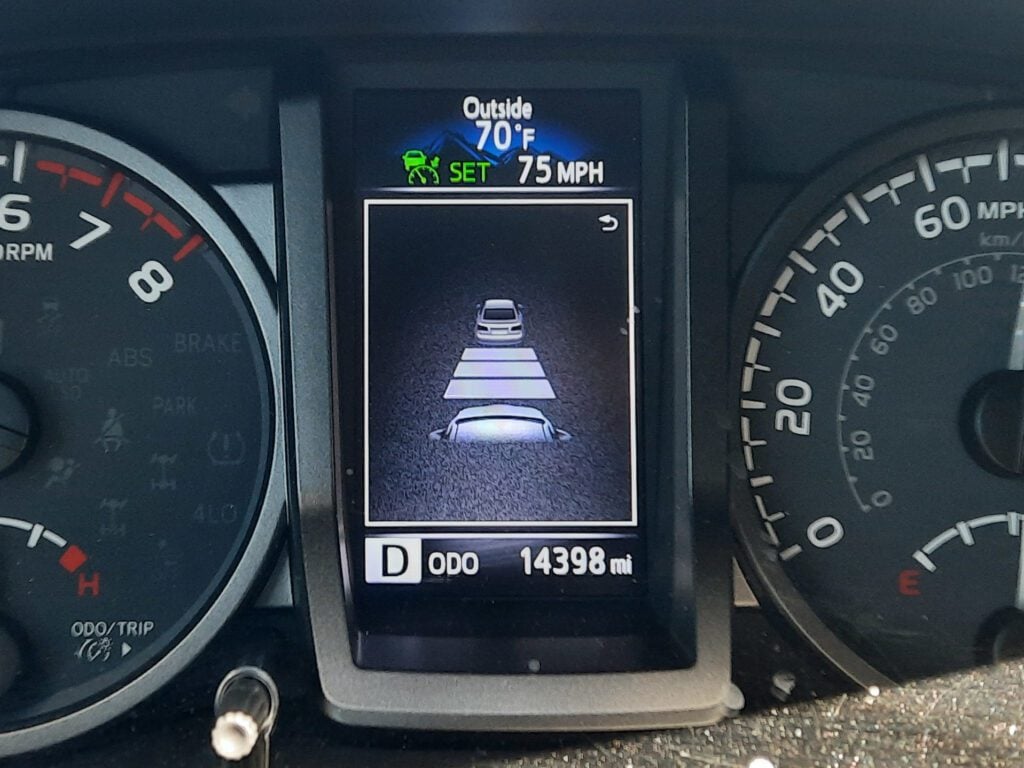
Those three rectangles show the amount of space the Tacoma leaves between you and the vehicle in front of you. For this photo, I show you the furthest setting (3 rectangles).
If the vehicle is no longer within the set distance of the Tacoma, it will disappear from the indicator screen, as shown above.
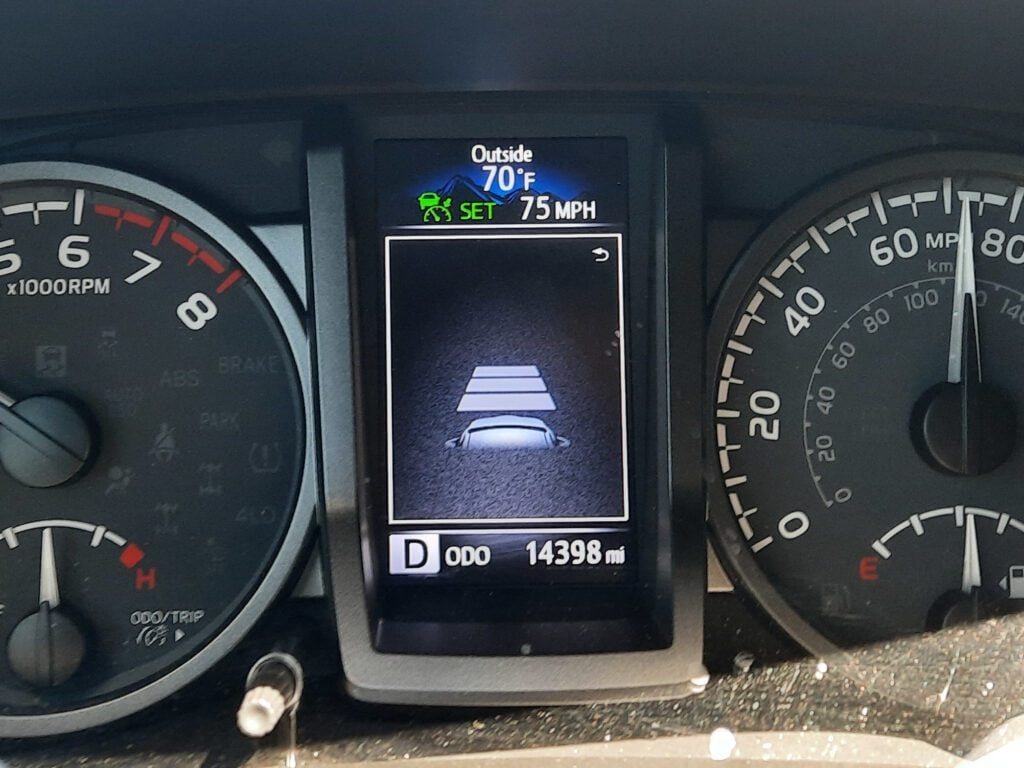
It’s simple to make changes to the distance using this button on the right-hand side of the steering wheel.
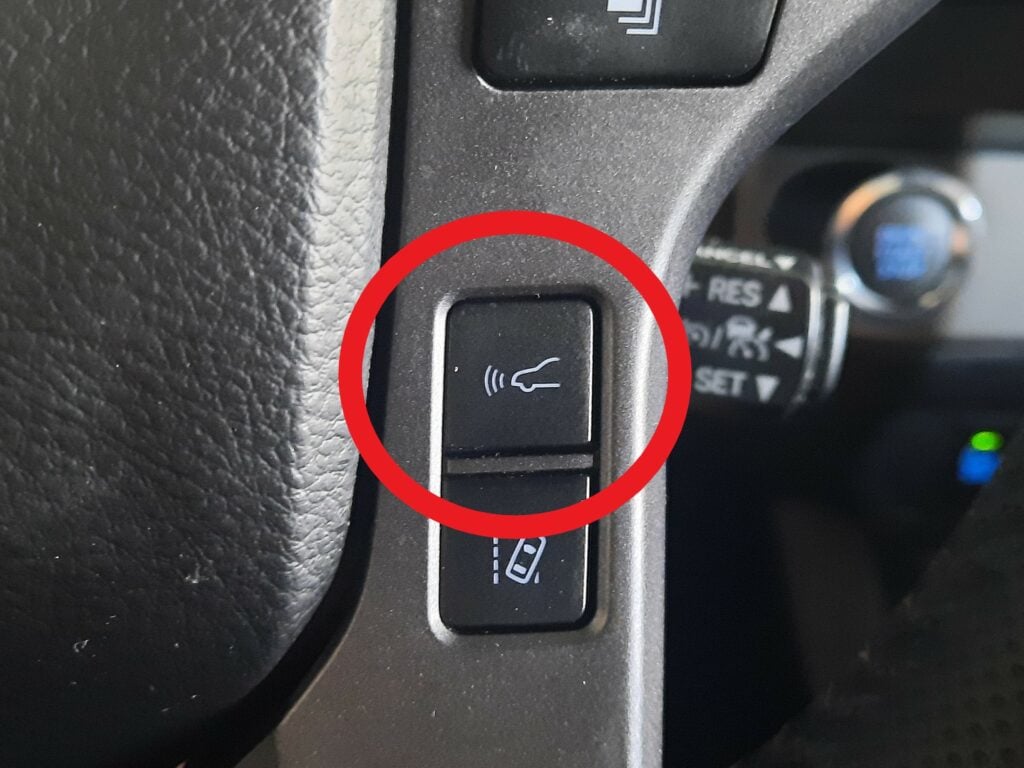
Push the button to cycle between three available following distances. Your changes will be visible on the multi-information display.
(Toyota)
How It Works
The Tacoma uses a radar sensor, a camera, and a computer system to analyze the speed of the vehicle in front of you.
By matching the speed, you remain a preset distance from that vehicle. The truck automatically accelerates and decelerates as needed without any further input from you.
There’s a radar sensor behind the Toyota badge and a camera on the front windshield. The radar sensors detect vehicles within 328 feet of the truck. It’s also used with the camera to monitor the distance between the vehicles so that the system can adjust automatically.
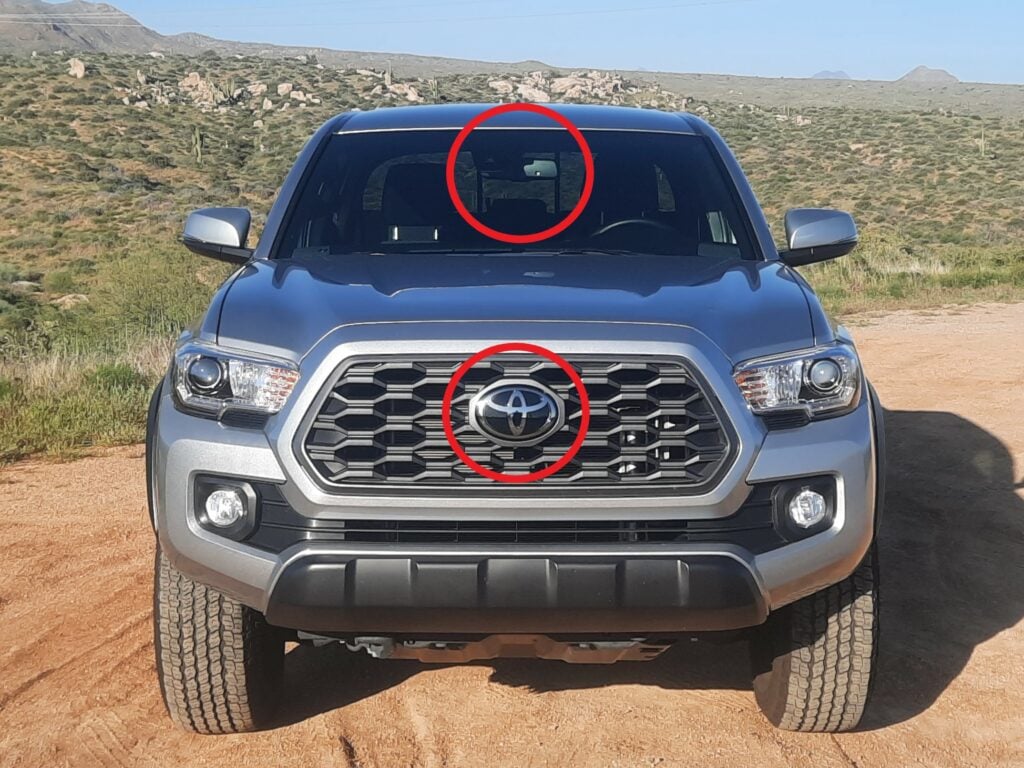
This system only works if you are traveling over 28 mph. It’s not foolproof, so you still need to remain alert.
For example, if a driver cuts in front of you and your truck is too close to their vehicle, a buzzer may sound and the display flashes. You need to manually step on your brake pedal to slow down.
Benefits
Adaptive cruise control is a top safety feature on the Tacoma. Here are a few of the most important benefits this system offers.
- Prevents collisions
- Makes the drive less stressful
- Creates a more relaxing commute
- Simple to use
- Reduces tailgating
- Improves comfort, especially for disabled drivers
(KBB)
Consider these important statistics as well.
- 63% of survey respondents were “very satisfied” with ACC systems (Consumer Reports)
- Adaptive cruise control and forward collision warning can reduce harsh braking by 67% (Department of Transportation)
- Adaptive cruise control can reduce fuel consumption by 2.8% on highways (Department of Transportation)
With all these benefits, it can be difficult to see the downsides of adaptive cruise control.
I personally love using it because it makes a long highway drive much easier. Although it is very important to stay alert.
Limitations
Adaptive cruise control has its limitations, but it keeps getting better as technology becomes more advanced. Here are some issues reported with the Tacoma system.
It has a hard time detecting distance in these situations:
- Vehicle cuts in front of the truck
- Vehicle in front travels at lower speeds
- Other vehicles moving in adjacent lanes
- Vehicle with a smaller rear end is in front, such as a trailer without a load
- A motorcycle is in front
- Water or snow is thrown up in front of the sensors
- Vehicle in front points upwards, such as when there’s a heavy load in the cargo area
- Vehicle in front has an extremely high ground clearance, such as with a lift kit
The system also struggles in these conditions:
- Narrow lanes
- Curvy roads
- Through tunnels
- Bad weather
- Sensor is dirty
It’s fair to say that the system isn’t perfect. It has taken some Toyota Tacoma users a little time to get used to adaptive cruise control, and learning where it works and where it fails.
Comparing Against the Competition
Toyota isn’t the only company to utilize adaptive cruise control. Here’s how a few of the competitors stack up.
- Ford: ACC system is similar to Toyota. However, Toyota includes it with the Safety Sense package, while Ford doesn’t make it available for every truck.
- Chevrolet: While most Chevy vehicles come standard with adaptive cruise control or have it as an optional feature, some don’t offer it at all. However, Chevy offers Super Cruise with some 2023 and 2022 Silverado trucks, allowing hands-free driving.
- Ram: Both Toyota and Ram offer tech to come to a complete stop in traffic, even with a trailer in tow. However, I’ve found the Tacoma system to be less reliable. I must remain alert regardless of the situation; sometimes, it brakes too hard. I think Ram’s system may be better overall, although I haven’t tested it firsthand.
Consumer Reports tested different driving assistance programs and rated them from best to worst. Toyota ranked 5th in the test.
Experiences From Tacoma Owners
My thoughts and opinions only go so far. How do Tacoma drivers feel about the adaptive cruise control technology? Let’s look at a few reviews I found online.
When a user on Tacomaworld.com asked how well owners liked adaptive cruise control, this is what some respondents had to say.
- “It’s nice on the highway as it will slow down and speed up to the speed you set it at. You can also adjust the distance between you and the vehicle in front. I am not sure I would trust it in heavy traffic.” – User CalcityRenegade
- “It can be very aggressive on the throttle – if someone slow changes lanes it will go near full throttle and drop gears to reach the set speed again.” – User mattleg
- “It’s slow to respond to people that brake suddenly, even at the full follow distance setting.” – User Mozart
There has also been some feedback left on a post found on Reddit. Here are the most important responses.
- “I’m extremely disappointed with the Tacoma‘s cruise control and lane assist. The lane assist is nothing more than an alert, and the cruise control does not work below 35 mph.” – User Sorbet-Right
- “The cruise control on the Tacoma is hot garbage, but I think that’s mainly because the transmission is. It just searches too much, and if you’re driving through hilly or mountainous roads, expect to use way too much gas. I drive through WV several times a year to see family in VB, and with the cruise on I used 15 mpg, off I hit 22 mpg.” – User Wookieriot
It seems feedback is either hit or miss with the adaptive cruise control. The only way to know whether you prefer it is to start using it.
Get the Most Out of Your Tacoma
Today’s Toyota Tacoma trucks have many advanced safety features to ensure your protection. Learning how to use and implement them when it benefits you is wise.
Adaptive cruise control is one system that may be worthwhile, depending on how you drive. Try it out and see if it fits your needs.

